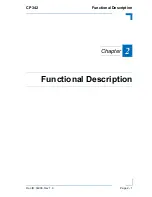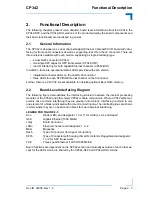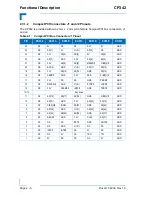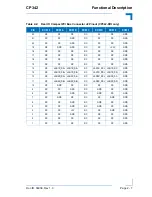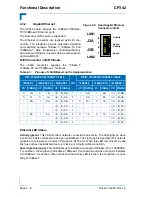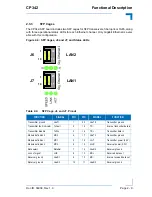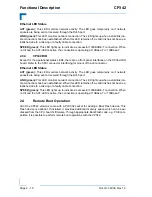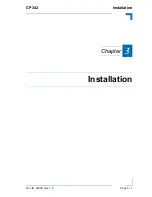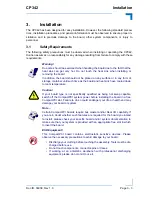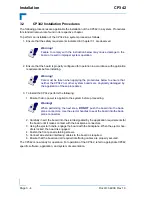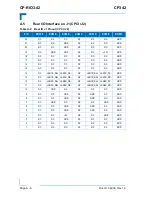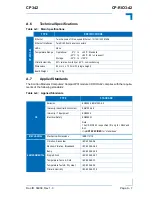
Doc.ID: 34938, Rev 1.0
Page 3 - 5
CP342
Installation
CUSTOMER SPECIFIC
P R E L I M A R Y
3.3
Standard Removal Procedures
To remove the board proceed as follows:
1. Ensure that the safety requirements indicated in Chapter 3.1 are observed. Particular at-
tention must be paid to the warning regarding the heat sink!
2. Ensure that no power is applied to the system before proceeding.
3. Disconnect any interfacing cables that may be connected to the board.
4. Unscrew the front panel retaining screws.
5. Disengage the board from the backplane by first unlocking the board ejection handle and
then by pressing the handle as required until the board is disengaged.
6. After disengaging the board from the backplane, pull the board out of the slot.
7. Dispose of the board as required.
3.4
Software Installation
The installation of the Ethernet and all other onboard peripheral drivers is described in detail in
the relevant Driver Kit files.
Installation of an operating system is a function of the OS software and is not addressed in this
manual. Refer to appropriate OS software documentation for installation.
Warning!
Care must be taken when applying the procedures below to ensure that
neither the CP342 nor system boards are physically damaged by the
application of these procedures.
Warning!
Due care should be exercised when handling the board due to the fact that
the heat sink can get very hot. Do not touch the heat sink when changing
the board.
Note ...
Users working with pre-configured operating system installation images for
Plug and Play compliant operating systems, for example Windows® XP, Win-
dows® XP Embedded, must take into consideration that the stepping and revi-
sion ID of the chipset and/or other onboard PCI devices may change. Thus, a
re-configuration of the operating system installation image deployed for a pre-
vious chipset stepping or revision ID is in most cases required. The correspond-
ing operating system will detect new devices according to the Plug and Play
configuration rules.

